Researcher native land
(to the 85th anniversary of the birth of Alexander Shekuna)
Alexander Vladimirovich Shekun born in Chernihiv 19 January 1935 year. He spent his childhood on the farm in the area Five Corners. After graduating from high school № 1 he entered the Leningrad Forestry Academy; After military service in 1959 year - the Kiev College of Light Industry. Do 1962 Shekun, Alexander received his technologist synthetic fibers and subsequent 16 years as a master, shift supervisor in Chernihiv synthetic fiber plant.

It was then that he became interested in archeology, became an active member of speleo-archaeological section Chernihiv regional organization of the Ukrainian Society for Protection of Historical and Cultural Monuments, а у 1977 he headed it. Capturing local history and archeology was calling.
Since its creation in 1980 Chernihiv, the historical museum of archeology sector it worked Fellow, then - head of sector. After organizing in 1998 year of the Chernihiv Regional Inspectorate for the Protection of Monuments, which entered the sector and archeology museum, Alexander Vladimirovich to 2003 year he held the position of senior researcher.
О.В. Shekun visited almost all districts of Chernihiv region with archeological explorations, explored and discovered more than 500 archaeological sites; explored the monuments of bronze, Early Iron Age, early Slavs, Ancient and poslemongolskoe time. He was engaged in excavations settlements, settlements, mounds and burial ground, studied the topography of ancient Chernihiv, initiated a study of ancient necropolis urban soil. Alexander Vladimirovich conducted research development in different parts of the city: on the citadel, Podol, on Tretiak and Peredhoroddi; materials of excavations on the street. Kotsyubynsky give an opportunity to get an idea of the construction of this street in ancient times. Do 1981 and 1983 years he studied the area around the Assumption Cathedral of the Elets Monastery. Do 1984 Five furnaces of the 12th century were excavated in the Mlynovyshche tract in. for burning plinfy.
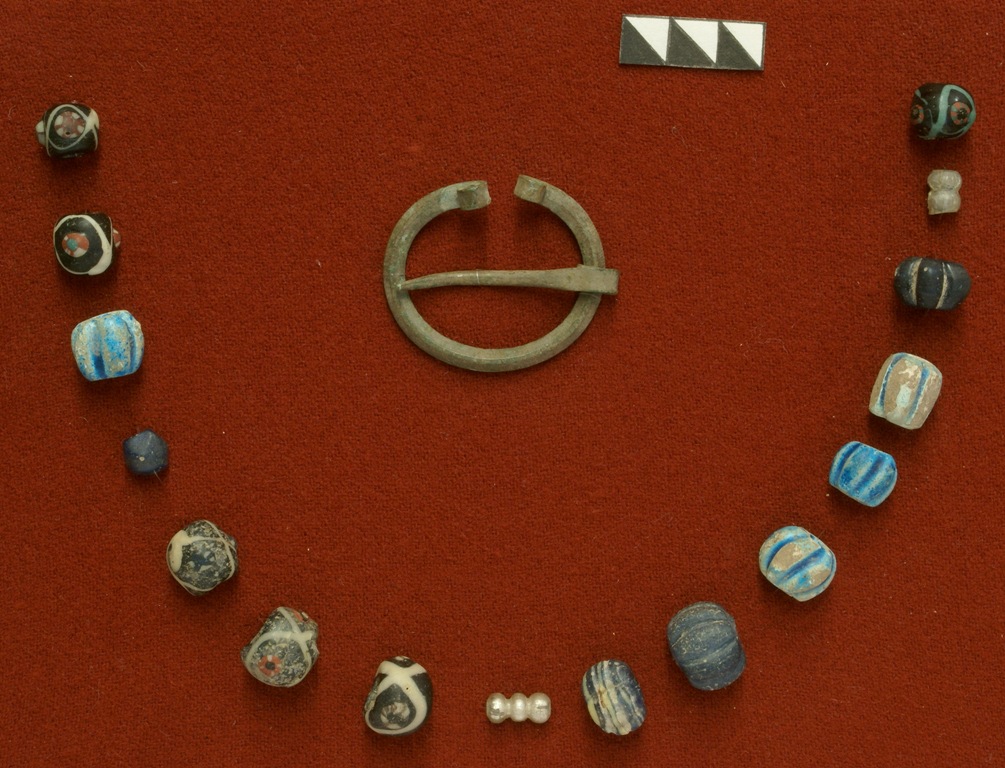
Beads and fibula. Getting XI. soil burial. м. Chernihiv.
Almost all materials archaeological explorations and excavations, and those, that they bring to the archaeologist students and locals, - and large collections, and several items were subsequently transferred to the museum. Some of them would like to stay alone.
Antiquities early Iron Age in northwest Chernihiv are monuments of culture milogradskoy. О.В. Shekun in 1981–1982 researched the burial mound of the 5th century. до н.е. near the village. Desnyanka of the Chernihiv district. It was excavated 7 from 8 mounds and interesting material extracted material. Most were finding massive glass beads (197 from.). The vast majority - a translucent glass beads with a red-brown color similar to amber, Others are made of opaque glass - white mosaic of colored patches, yellow, blue and turquoise. Identified as beads and pendants from pieces of amber of various forms. In one of the mounds found bronze mirror flat-iron handle, four burials - tsvyahopodibni iron pins. Ceramics presented 5 miniature vessels.
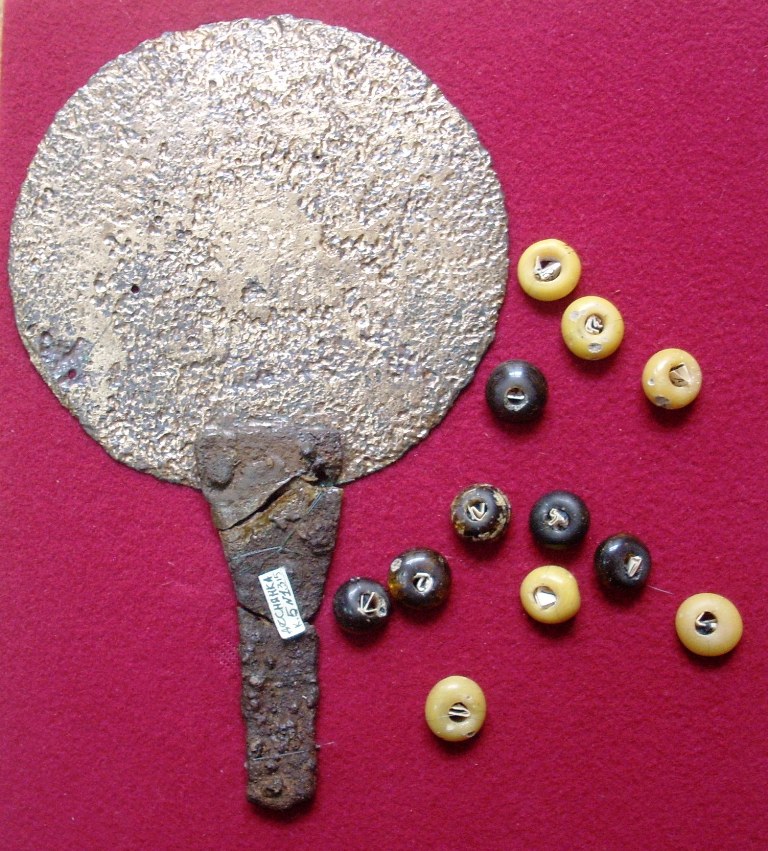
Mirror and beads. V st to H.E. Burial mound grave near the village. Desnyanka.
The early Slavic settlement of Oleksandrivka I is located on the northeastern outskirts of Chernihiv.. Expedition led by O. Shekuna for eight field seasons conducted protective excavations on the territory of Interest. Were found the remains of the well, which generally occurred in the first of early settlement. traced 3 existence settlement horizons: Kiev culture, end of IV - first half of V century.; kolochynska culture, VI-VII centuries; sahnivsko-type volyntsevskyy, the first half of the VIII century. Evidence of contact with the public is Chernyakhovsky workshop, which produced semi ridges of horn, and pottery finds, tuff millstones, jewelry, steel rod with trapezoidal ridge and back.
The most representative and the number of attractions and studied in terms of materials is obtained era of ancient. First, we should recall the Old Russian settlement in the tract Liskov, located north of Chernihiv near the village. Small Lystven Ripky area. The settlement of the second half of the IX - first half of the XIII century. located in the upper reaches of the river. Belous, on both its banks. O Open. Shekun y 1976 year, settlements studied for sixteen seasons of field 1977 by 1992 year Chernihiv Historical Museum expedition under the constant direction of Alexander V.. Excavations show rather complex diversified economy. Findings are the most popular pottery, which are not only different pots, and bowls, glekami, pans, Korchagov, amforami, crucibles, nozzles, pryaslytsyamy and toys. On employment and life of ancient inhabitants of the village tell Agricultural tools, various tools and tools for hunting, fishing and beekeeping, for the processing of ferrous metals, blacksmith and jewelry, domestic and cult objects, прикраси, made of different materials. The results of these studies have changed the views of scientists on the medieval village.
But not only digs, but archaeological exploration of ancient monuments gave interesting and even unique finds. So, in the village Lanok near the village. Khmilnytsia, Chernihiv district, 1980 year, the Byzantine cross-encolpion was found. In front sash placed relief image of the crucified Christ with cruciform halo, the sides - predstoyachyh figures of the Virgin and St. John the Divine, under the hands of Christ-depth Greek. The back wing central relief image of the Virgin Orans, enlarged images of four Evangelists bust at the ends.
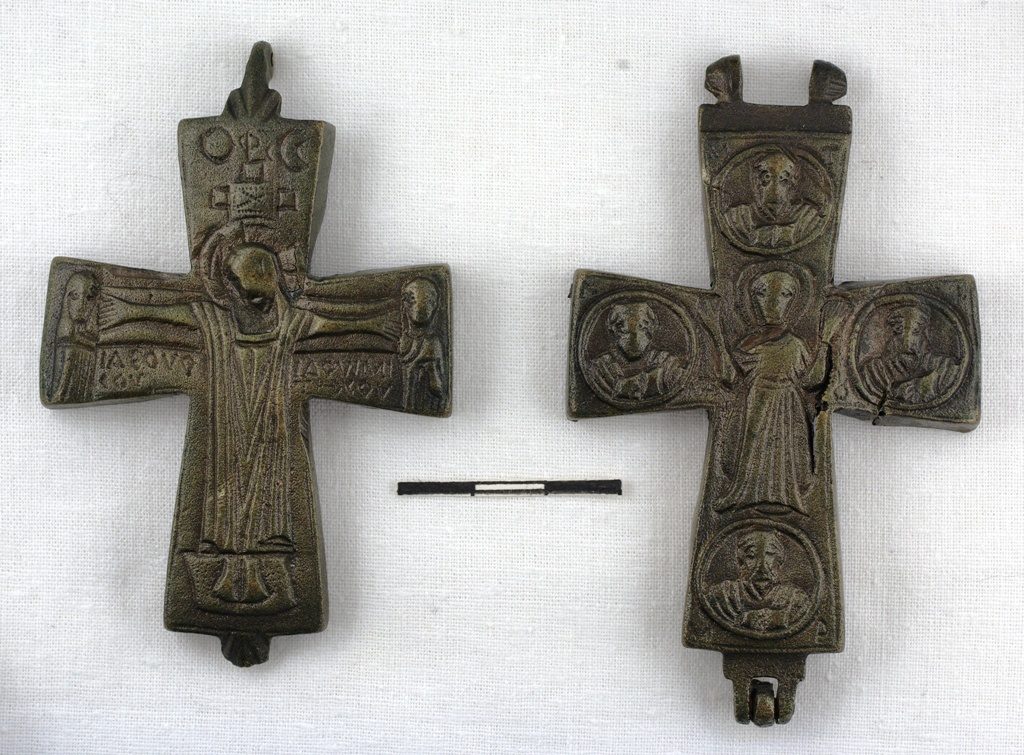
Encolpyon. ХІ ст. The settlement units near the village. Hmilnytsya.
A significant activity in O. Shekuna take study ancient Chernihiv, including soil necropolis Street. Kuibyshev, 13 (now St.. Магістратська). been disclosed 219 burials of the late X - early XIII centuries.
Among the findings should be noted iron rod with bronze pommel dragon's head. These tops are known among the materials Gotland, "Black Land" tags, Upland. Functional findings are not well understood, can be interpreted as a pin or awl. This is a collection of related ornamented cup, made of thin sheet bronze. Finds similar products located on the Baltic coast: in the cemetery Irzekapinis.
Thanks to Oleksandr Volodymyrovych, the collection of the Chernihiv Historical Museum named after V.V.. Tarnowski was replenished 16 626 предметами, 2 726 artifacts belong to the main fund of the museum, among them - not just interesting, but unique finds, some of which are represented in the museum.
A whole generation of school Chernihiv archaeological find his teacher Alexander Vladimirovich: Elena Veremeychyk, Valentina Multan, Sergey Laevsky, Gennady Zharov, Yuri Fed, Lyudmila Sita, Sergey Sorokin and others.
Contribution of OV. Shekun in the archaeological study of Chernihiv is difficult to overestimate.
Head of the Department of Museum Victoria Mudrytska
Senior Fellow museum Lyudmila Screens

Pendant. X-XI. Liskov-1 settlement near the village. Малий Листвен.

Lock and key. Liskov settlement near the village. Малий Листвен.
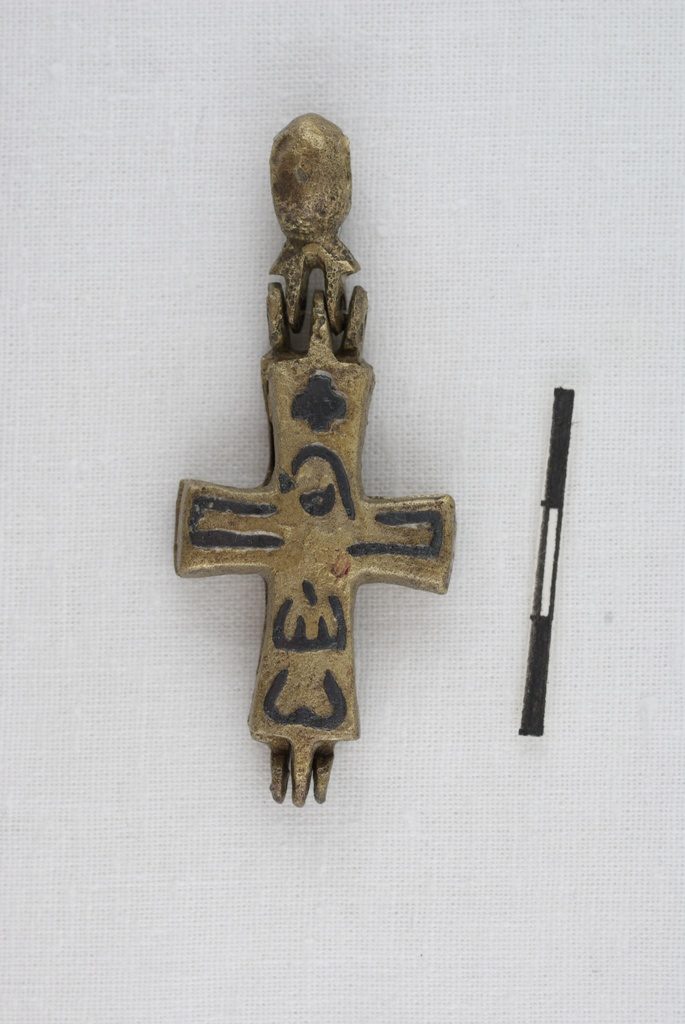
Encolpyon. HII- first half century HIII. Settlement Liskov 2 near village. Малий Листвен.

Pendant lunnytsya. XII century. Well settlement near the village. New Belous.

finial. Getting XI. soil burial. м. Chernihiv.

cup. XII century. soil burial. м. Chernihiv.

crosses. HII- first half century HIII. м. Chernihiv.

crosses. XII-XIII. м. Chernihiv.

Ceramic tableware from excavations OV. Şekuna. Photo Exhibition. 2015 Dr..


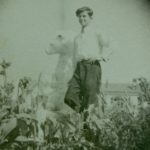





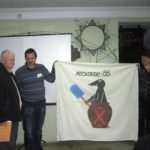
More Stories
Needed, perhaps, God's gift to create beautiful things from clay
Exhibition “In memory of cultural workers...”
Congregant of Metropolitan Peter Mohyla and Hetman Ivan Vyhovsky from the Baturyn Monastery